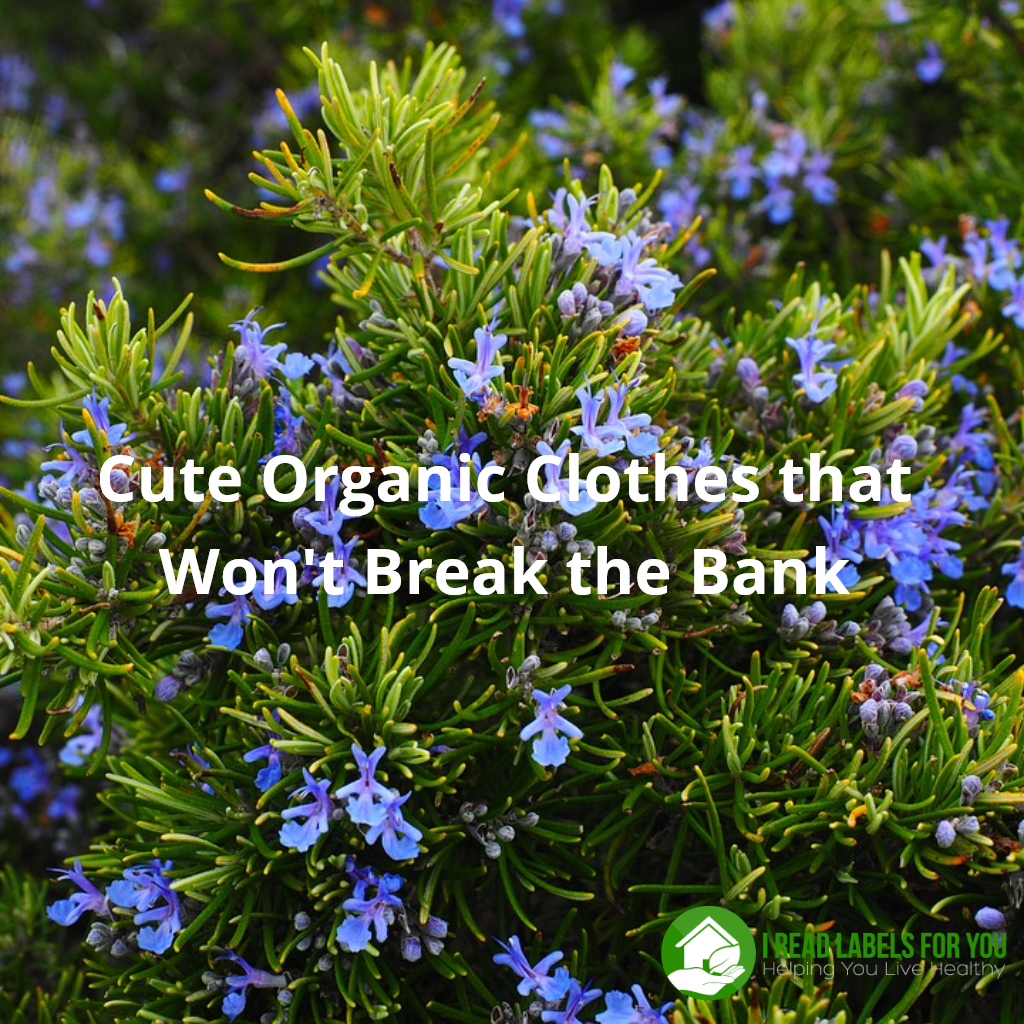Best Non-Toxic Bug Spray Guide

Everyone in the house is fast asleep except me – I am busy scratching my itchy skin irritations caused by mosquito bites. As a child, I took those for granted as a necessary part of my summer vacations. Nowadays, however, there are all sorts of insect repellents formulated to protect you from annoying bug bites. Scratching and ugly swollen skin bumps caused by mosquitos, ticks, and other bugs are not the only things they can save you from. They can also save you from contracting dangerous bug-borne diseases.
This non-toxic bug spray guide will help you find the best bug repellent for you and your family. You will also learn the difference between the best repellents in disease-carrying bug areas and areas with no known risk of insect-borne diseases. Additionally, you’ll find out what alternatives are used in DEET-free natural bug repellents and whether they are always safe for you.
Best Non-Toxic Bug Spray Guide
First of all, why use a non-toxic bug spray? The answer to this question may vary between the innocent “to enjoy the outdoors” to the more serious “to protect your health.”
To clarify, mosquitoes, ticks, and other bugs (e.g., fleas) can spread germs causing such bug-borne diseases as dengue, Zika, Lyme, and plague. The Centers for Disease Control and Prevention (CDC) point out that between 2004 and 2016, more than 640,000 cases of these bug-borne diseases were reported in the US. Additionally, during this period, 9 new germs spread by bug bites from infected mosquitoes and ticks were discovered or introduced in the US.
Moreover, the CDC warns Americans about an increase in the number of tickborne diseases. According to the CDC, the geographic areas in which ticks are found are expanding, and a novel tick species has been found in the US. Also, there are discoveries of new disease-causing germs, leading to new reports of tickborne illnesses.
Hence, the CDC encourages everyone to take steps to help protect themselves from mosquitoes, ticks, and other bugs bites. The first step would be using a bug repellent registered by the US Environmental Protection Agency (EPA). In the chart below, you can see the EWG recommended bug repellent concentrations.

In this non-toxic bug spray guide, you will learn how to identify the “best” bug repellent. We will go through the “worst” and “bad” categories of bug sprays and the reasons they were placed there. After this, we will talk about the “better” and “best” ones.

“Worst” Insect Repellents
This group includes insect repellents that contain DEET in concentrations of nearly 100%. For example, the following products contain 98.11% DEET (the maximum amount allowed by law):
- 10 Hour DEET Insect Repellent
- Coleman Max 100 Percent DEET Insect Repellent
- Repel 100 Insect Repellent
- Sawyer Maxi DEET.
What Is DEET?
First, DEET is a chemical called N,N-diethyl-meta-toluamide and is an active ingredient in some common pest repellents. Admittedly, it provides significant protection against mosquito-borne and tickborne illnesses, including Lyme disease and Rocky Mountain Spotted Fever (carried by ticks), and West Nile Virus and Zika Virus (spread by mosquitoes).
Second, it is important to know that DEET concentration in commercial products varies country by country and can range from 4% to 98.11% in the United States. Note that a higher percentage of DEET does not imply stronger coverage. All DEET repellents give the same coverage, and the percentage corresponds to the periods of time the protection will last. For example, with 25% and 98.11% DEET, the protection will last six and ten hours, respectively.
However, in my opinion, we cannot call a DEET-containing product the best bug repellent in this non-toxic bug spray guide, and here is why.
Health Effects Of DEET
On the one hand, numerous studies show there are no unreasonable adverse effects on people or the environment with normal use of DEET products. In other words, if you choose the appropriate percentage for your activity and follow the label instructions, you should not experience any immediate harms.
On the other hand, however, the US Agency for Toxic Substances and Disease Registry (ATSDR) Toxicological Profile for DEET presents studies that show a connection between DEET and adverse health effects, including:
- neurological
- dermal, and even
- fatal.
Neurological Effects Of DEET
First, the ATSDR Toxicological Profile for DEET describes a study of 20,764 human exposures to insect repellents containing DEET. Those cases were reported to poison control centers between 1993 and 1997. Out of them, 2,179 cases of exposure happened through skin contact. Of these, 118 showed minor neurologic symptoms such as dizziness/vertigo, headache, and drowsiness/lethargy. But there were also severe symptoms among these cases, such as:
- tremors (15 cases)
- single seizures (8)
- muscle weakness (10)
- muscle rigidity (5)
- peripheral neuropathy (5)
- slurred speech (3), and
- paralysis (1).
Dermal Effects Of DEET
Second, the Toxicological Profile for DEET examines a case with a group of soldiers who developed acute dermatitis as a reaction to DEET. They applied an insect repellent containing 50% DEET before sleep to the uncovered skin of the face, neck, upper part of the trunk, and legs, and had a severe reaction 18–24 hours after the application.
It seems that the mentioned health concerns are sufficient to see that a DEET containing spray cannot be the best bug repellent in this non-toxic bug spray guide. But there is more.
Fatalities Due To DEET
Above all, five deaths have been associated with dermal exposure to DEET and three of them occurred in children (source).
A 5-year-old girl developed severe headaches after having been sprayed nightly for almost 3 months with an insect repellent containing 10% DEET. An autopsy revealed generalized edema of the brain with intense congestion of the brain and meninges.
The second case was a 6-year-old girl who in response to repeated black fly bug bites used a spray containing 15% DEET on at least 10 occasions on extensive areas of skin. An autopsy showed an edematous brain.
The third case was a 17-month-old girl who was admitted to the hospital with a diagnosis of acute encephalopathy. During the 3 weeks prior to admission, the child had received repeated applications of a lotion containing DEET.
Lastly, the two deaths of a 26-year-old male and a 34-year-old female followed dermal exposure to >50% DEET.
In short, I do not see the need for DEET with very high concentrations in your repellent. Even in high-risk areas when you have to use DEET for protection, choose the lowest percentage possible and re-apply it per the manufacturer’s instructions.

“Bad” Bug Repellents
In our search for the “best” bug repellent in this non-toxic bug spray guide, we keep eliminating those that contain unsafe or unnecessary ingredients. Hence, in my opinion, the criteria for the “bad” bug repellents are as follows:
- less than 98.11% but more than 30% DEET
- bug repellent and sunscreen in one
- oil of lemon eucalyptus, and
- para-menthane-3,8-diol (PMD).
For example, the following products belong in this group:
- Avon Skin So Soft Bug Guard Plus IR3535® Expedition™ SPF 30 Pump Spray (DEET-free but contains chemical UV filters)
- Bull Frog Mosquito Coast Sunscreen with Insect Repellent Continuous Spray, SPF 50 (DEET-free but contains chemical UV filters)
- Cutter Backwoods High DEET Insect Repellent Aerosol (DEET-free but contains 30% oil of natural lemon eucalyptus)
- Off Botanicals Insect Repellent IV (DEET-free but contains 10% synthetic PMD)
- Repel Insect Repellent Sportsmen Max Formula (40% DEET).
Having already discussed DEET, let us focus on the three remaining criteria.
Bug Repellents With Sunscreen
To begin with, the mentioned insect repellents with sunscreen – Bull Frog and Avon – contain chemical UV filters that I recommend avoiding in a sunscreen. They are:
- avobenzone (Bull Frog – 3%)
- homosalate (Bull Frog – 10%)
- octocrylene (Avon – 10%, Bull Frog – 5%)
- octinoxate (Avon – 7.5%)
- oxybenzone (Avon – 6%)
- octisalate (Avon – 5%, Bull Frog – 5%)
- octyl methoxycinnamate (Bull Frog – 7.5%).
In a nutshell, all UV filters are divided into two categories: chemical and mineral. My recommendation is to use sunscreens with mineral filters, specifically zinc oxide, because it is the safest and most effective filter. Alternatively, chemical substances, such as the ones above, may have a harmful effect on the body and the environment. If you are looking for a safe and effective sunscreen with UVA protection, please check out my Best Non-Toxic Face Sunscreen Guide and my Guide To The Safest Baby Sunscreen And Sunscreen For Kids blog posts.
There is another reason, however, that prevents me from placing a repellent-and-sunscreen-in-one in the “best” bug repellent category in this non-toxic bug spray guide.
On average, you must re-apply sunscreen every two hours, whereas the bug repellent reapplication interval is longer. Thus, if you re-apply your insect repellent every two hours to refresh your sunscreen protection, you automatically overexpose yourself to the active ingredient of the repellent regardless of what it is. That is why I do not recommend you use a sunscreen and repellent in one (and neither does the EWG, by the way).
Oil Of Lemon Eucalyptus And PMD
To start with, oil of natural lemon eucalyptus originated as an extract of the eucalyptus tree native to Australia. The tree extract is refined to intensify the concentration of the naturally occurring substance called “para-menthane-3,8-diol” (PMD) from 1% to 65% (source). The resulting oil is very different from unprocessed oil.
The Cutter Lemon Eucalyptus Insect Repellent Aerosol contains 30% of oil of natural lemon eucalyptus. And the Off Botanicals Insect Repellent IV is comprised of 10% synthetic PMD. The CDC warns against the use of these ingredients on children younger than 3 years old. My understanding is that this is because some chemicals in them, such as citronellol, may cause an allergic reaction.
Mainly, I consider these options “bad” because even though they are natural, they still can cause an allergic reaction. And yet, they do not provide robust protection. Specifically, Oil of Lemon Eucalyptus doesn’t protect against Zika virus. Furthermore, PMD doesn’t protect from Zika virus and Lyme disease. Therefore, if you are in an area with dangerous bugs (see below), you might not want to use them.
Thus, in my opinion, oil of natural lemon eucalyptus and PMD have certain flaws and are not appropriate for all situations. If you are looking for the best bug repellent with botanical ingredients, keep reading.

“Better” Non-Toxic Bug Spray
This guide is unique in the way that it has two groups of “better” (as well as two groups of “best”). To clarify, based on their properties, some products are “better” (or “best”) for the disease-carrying bug areas and others work for the areas with no known risk of insect-borne diseases.
To determine the level of risk for the area you live in (or plan on visiting), please follow the links below. There you will see the number of reported cases for each virus in the US in the past, maps indicating the virus distribution, and additional information which will help you draw a conclusion about your area.
As reported by Centers for Disease Control and Prevention, for tick-borne disease areas:
For mosquito-borne disease areas:
Once you get an understanding about the risk level in your area, it will be easier for you to make a choice from the best bug repellent options in this non-toxic bug spray guide.
“Better” Insect Repellents For High-Risk Areas
The criterion for these products is just 7-30% DEET concentration. To protect yourself from Zika, you do not need more than 30% DEET (source).
As I mentioned above, DEET is effective in repelling dangerous insects when used according to the manufacturer’s instructions. Hence, if you have no safer choice, you can decide to use one of the following:
- 3M Ultrathon Insect Repellent (DEET 25%)
- Cutter All Family Spray Repellent (DEET 7%)
- Cutter Backwoods Repellent (DEET 25%)
- Cutter Dry Insect Repellent Unscented (DEET 10%)
- Cutter Skinsations Insect Repellent Aerosol (DEET 7%)
- Cutter Sport Insect Repellent (DEET 15%)
- Off Deep Woods Insect Repellent VIII Dry (DEET 25%)
- Off Deep Woods Sportsmen II (DEET 30%)
- Off Family Care Smooth & Dry (DEET 15%).
Please remember that in high-risk areas, it is more important to protect yourself from a disease-carrying bug than to dwell on the potential effects of DEET on your health. So, for lack of the best DEET-free bug repellent for the disease-carrying bug areas, use one with a lower DEET concentration. But remember that you need 20-30% of DEET to protect yourself from Lyme disease.
“Better” Non-Toxic Bug Spray For No-Risk Areas
The criteria for this group include:
- Picaridin in concentrations of 5-10%, and
- IR3535 in concentrations of less than 20%.
For instance, the following products contain these active ingredients:
- Avon Skin So Soft Bug Guard Plus Picaridin Aerosol Spray (10%)
- OFF!® Family Care Insect Repellent II with Picaridin (5%)
Picaridin
First, a 2018 comparative review of DEET and picaridin mosquito repellency showed no significant difference in performance after considering more than 140 field and laboratory studies.
In contrast to DEET, picaridin has very low inhalation toxicity, is not known to cause skin irritation, and does not have a pungent odor (source). Plus, it evaporates from the skin more slowly than DEET or IR3535 and may repel bugs for longer periods of time.
A review of reports to the National Poison Data System between 2000 and 2015 found that unintentional ingestion of picaridin-containing insect repellents was associated only with minor toxicity that was managed outside of a health-care facility. In addition, picaridin does not carry the same neurotoxicity concerns as DEET.
EPA registration data indicate that at a concentration of 10%, picaridin is effective for five to 12 hours (source).
Overall, in my opinion, picaridin is a great alternative to DEET with many of the same advantages and without DEET’s disadvantages. That is why products with 20% of picaridin made it into the “best” bug repellent category of this non-toxic bug spray guide for disease-carrying bug areas.
IR 3535
The full chemical name of IR 3535 is 3-[n-butyl-n-acetyl]-aminopropionic acid, ethyl ester. Though IR3535 can be very irritating to the eyes, it poses few other safety risks. Formulations with 10% to 30% IR3535 are recommended to repel biting insects and ticks (source).
In addition, a comprehensive review of public efficacy studies completed between 2000 and 2013 found the performance of IR3535 to be similar or slightly less effective than DEET and picaridin against mosquitoes. Against deer ticks, IR3535 provided over twice the mean protection time of DEET, picaridin or oil of lemon eucalyptus (source).
As I mentioned above, this chemical is often an active ingredient of sunscreens and repellents in one. And I recommend avoiding two-in-one products for the reasons explained in the section devoted to the “bad” bug repellents. Other than that, IR3535 is a good option that should provide strong enough repellency from mosquitoes, ticks, and other bugs. However, it doesn’t protect from Zika virus.

“Best” Bug Repellent
Again, there are two groups in the “best” category – repellents for disease-carrying bug areas and for areas with no known risk of bug-borne diseases.
“Best” Non-Toxic Bug Spray For High-Risk Areas
The criterion for these products is 20% concentration of picaridin or IR3535, and the products include:
- Ben’s® Tick Repellent 6 oz. Eco-Spray® (20%)
- Coleman SkinSmart Insect Repellent (20% IR 3535)
- Natrapel®12-hour 6 oz. Continuous Spray (20%)
- Proven Insect Repellent Spray – Odorless (20%)
- Ranger Ready Repellent (20%)
- Sawyer Picaridin Insect Repellent Spray (20%)
In comparison to DEET, picaridin is a much safer choice. As we discussed above, it does not possess the pungent smell of DEET. Neither does it have the same neurotoxicity concerns.
Additionally, EPA data suggests that at a concentration of 20%, picaridin is effective against mosquitoes, ticks, and other bugs for eight to 14 hours, and at a concentration of 10% for five to 12 hours (source). Please know to protect from Lyme disease and Zika virus, you do need 20% concentration.
Nevertheless, I am not 100% excited about the products in this group. My pet peeve is that they do not have full lists of ingredients. The only product that gives us a peek into what it consists of other than picaridin is Sawyer Picaridin Insect Repellent Spray with 20% picaridin and 27-33% ethanol.
Therefore, if you happen to come across a picaridin bug repellent with a fully disclosed list of ingredients, please let us know in the comments.
“Best” Bug Repellent For No-Risk Areas
The products in this category consist of essential oils. Five of them are non-toxic bug spray repellents, and one is a balm.
- Badger Anti-Bug Spray
- California Baby Natural Blend Bug Repellent
- Greenerways Organic Bug Repellent
- Kosmatology Bug Repellent Balm
The safest insect repellents are made with essential oils. However, not all essential oils in natural bug repellents are safe.
Thus, the National Association for Holistic Aromatherapy has published a list of essential oils that are best to use in highly diluted form or avoid using altogether throughout pregnancy, labor, and breastfeeding. You can read more about it here.
Further, please exercise special caution with the use of the following oils on infants, toddlers, and young children:
- betula lenta (birch)
- eucalyptus globulus (eucalyptus)
- gaultheria procumbens (wintergreen), and
- mentha piperita (peppermint).
However, these essential oils are also effective bug repellents. Let us look at the ingredients of the best bug repellent options made with essential oils.
Badger Non-Toxic Bug Spray
Badger Anti-Bug Shake & Spray: Organic Soybean Oil, Organic Castor Oil, Organic Citronella Oil, Organic Cedarwood Oil, Organic Lemongrass Oil, Organic Rosemary Oil, Organic Geranium Oil, Organic Peppermint Oil, Water, Organic Wintergreen Oil.
First, this natural bug spray consists of certified organic ingredients. It does contain peppermint and wintergreen oils, though, which might be concerning for young children.
California Baby Non-Toxic Bug Spray
California Baby Natural Bug Blend Bug Repellent: Pure Essential Oils of Cymbopogon Nardus (Citronella) 5%, Cymbopogon Schoenanthus (Lemongrass) 0.5%, Cedrus Atlantica (Cedar) 0.5%, Water, Lecithin, Organic Quillaja Saponaria Extract (Soapbark), Vegetable Glycerin.
The main essential oil here is 5% organic citronella, which probably means that it smells like citronella. Additionally, there is none of the four essential oils listed above that can cause problems for babies or young children.
Greenerways Organic Non-Toxic Bug Spray
Greenerways Organic Bug Repellent: Citronella Oil, Lemongrass Oil, Soybean Oil, Peppermint Oil, Cedarwood Oil, Thyme.
There are only six ingredients in this natural bug spray, and one of them is soybean oil that has no human allergens (source). On the other hand, it does have peppermint oil from the list above.
Kosmatology Best Bug Repellent
Kosmatology Bug Repellent Balm: Organic Rosmarinus Officinalis (Rosemary) 1.8%, Organic Thymus Vulgaris (Thyme) 0.4%, Organic Syzygium Aromaticum (Clove) 0.45%, Organic Cinnamomum Verum (Cinnamon) 0.05%, Organic Pelargonium Graveolens (Rose Geranium) Essential Oil 0.2%, Organic Cocos Nucifera (Coconut) Oil, Euphorbia Cerifera (Candelilla) Wax, Organic Butyrospermum Parkii (Shea) Butter, Sambucus Nigra Fruit Extract, Tocopherol (Vitamin E), Organic Citrus Limon (Lemon) Essential Oil, Organic Lavandula Angustifolia (Lavender) Essential Oil.
This is the only balm out of the insect spray options. There are a lot of organic ingredients and no oils of concern. Also, I like the fact that it is a balm because it helps essential oils to stay on your skin longer.
Conclusion About Non-Toxic Bug Spray
The Choice Of A Bug Repellent Depends On The Place And Purpose For Which You Are Going To Use It.
To sum up, in my opinion, in disease-carrying bug areas, repellents with picaridin are an optimal choice. In the absence of picaridin repellents, a lower concentration of DEET will do. On the other hand, if your area has no known risk of insect-borne disease, the safest choice is a natural bug spray or repellent made with essential oils. However, knowing that essential oils may cause allergies, please consider your health condition to make the best choice for yourself.
Visit the I Read Labels For You blog for the latest publications on healthy living and browse our shop for non-toxic products for your home and family. Also, check out our e-books and book a service for help to identify solutions that work for your health, budget, and appetite for change.

Download The Free Guide!
5 Powerful Steps To A Non-Toxic Home
Join our informed consumer community and get our free guide the “5 Powerful Steps To A Non-Toxic Home”.

 Written by
Written by 
firstly, thank you for all of your amazing work. I so value your research on this blog!
I was curious if you found any “better/best” bug repellant options in wristband options etc, rather than applying directly to skin. For example: the Parakito bracelet etc.
Hi Kathryn! Thank you for your kind feedback! We haven’t looked into this subject yet. Thank you for the suggestion!
Proven lists these ingredients on Amazon for the unscented: Picaridin (20%), Other Ingredients (80%) Picaridin (brand Saltidin)Active ingredient: Deionized water Diluent, Glycerin Humectant, Ethanol denatured Solvent, Polyethylene Glycol 400 Ointment, Caprylic / Capric triglyceride Emollient, Carbopol 2984 (less than 0.5%) Thickener, Pemulen TR1 (less than 0.5%) Emulsifier, Sodium Hydroxide 50% solution (less than 0.5%) PH control
Do you still like this one?
Thank you, Heather! That helps. The ingredients are still not fully disclosed. They describe them instead of naming them. ~Irina
We live in Fiji (lots of mosquito-borne diseases here), and use Aeroguard Odourless. The ingredients are listed: Water, Alcohol denat, Picaridin.
Hi, Bene: I wonder if this is a full list of ingredients. Did you double-check with them? ~Irina
I checked their website. They also make a number of far more toxic products but they’re the leading insect repellent brand in Australian and I suspect the Australian Consumer Commission would be quick to act if there were any concerns that that the company wasn’t disclosing all ingredients. The odourless range is also recommended by the Royal Children’s Hospital for children over 12 months of age.
Is there something that makes you think they aren’t fully disclosing the ingredients? Thanks Irina!
It is just because the list of ingredients is unusually short. ~Irina
Hi Irina, I followed-up with Aeorguard in Australia, and spoke with an employee who confirmed the ingredients are indeed just water, alcohol and picaridin.
Thank you, Bene! We appreciate your effort!
Thank you for this exhaustive report! I love sitting on my unscreened front porch year-round, and have tried homemade repellent (basically parsley and apple cider vinegar) that worked fine but were problematic dispensing from spray bottles so discontinued. Lately I’ve been using Natrapel that I get from REI. It works well but now I’ll consider one of the organics you recommend.